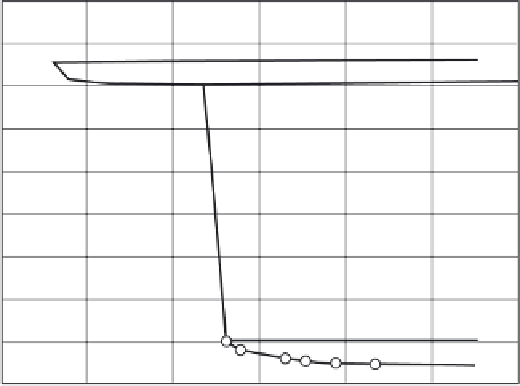Environmental Engineering Reference
In-Depth Information
1000
11,280 psf
14,550 psf
Water added
Rebound
Compaction
1500
Consolidation
2000
0
1
2
3
Time (days)
4
5
6
FIGURE 10.26
Laboratory consolidation test curve of compression vs. time for a collapsible soil from the San Joaquin
Valley. (From Curtin, G.,
Geology, Seismicity and Environmental Impact, Special Publication
Association
Engineering, Geology, University Publishers, Los Angles, 1973. With permission.)
100
3
50
Soil origin:
1. Sandstones
2. Basalts
3. Tertiary clays
2
1
FIGURE 10.27
Gradation curves for typical porous clays of Brazil.
(From Vargas, 1972.)
0
0.001
0.1
10
0.01
1
Diameter of grains (mm)
Soil origin:
1. Sandstones
2. Basalts
3. Tertiary clays
50
2
3
1
"A" line
1
FIGURE 10.28
Relationship between plasticity index and
liquid limit, porous clays of Brazil. (From
Vargas, 1972.)
0
100
50
0
Liquid limit
Although the soil is essentially a clay, its open, porous structure provides for high
permeability and the rapid compression characteristics of a sand, hence the term “porous
clay.” The porous characteristics are the result of the leaching out of iron and other
minerals that are carried by migrating water to some depth where they precipitate to form







